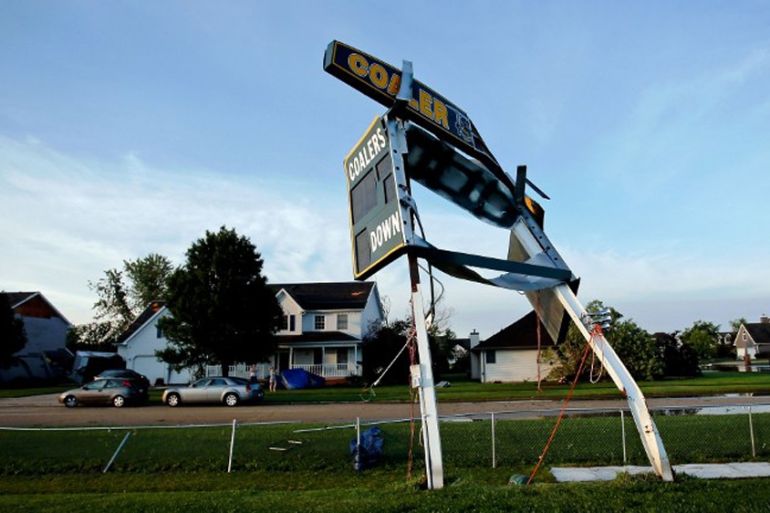Destructive winds and tornadoes carve through the US
Damaging weather system affects a number of states, from the Upper Plains to the Mid Atlantic.

A long-lived squall line, known as a “derecho”, cut a swath from South Dakota to Wisconsin in the United States on Tuesday morning, leaving widespread damage in a path that also included northern Iowa and southern Minnesota.
The complex of storms from South Dakota to Wisconsin qualified as a derecho – Spanish for straight ahead – after damaging wind reports spanned more than 400km. Winds reportedly gusting as high as 200km/h, struck the High Plains, causing major damage at Sheldon Municipal Airport, just north of Sheldon, Iowa.
Keep reading
list of 4 itemsPhotos: Deadly floods wreak havoc in Kenya’s capital
China evacuates over 100,000 as heavy rain continues to lash south
Asia bears biggest climate-change brunt amid extreme weather: WMO
A second round of thunderstorms erupted in the afternoon in Missouri, Iowa, Illinois and Michigan, continuing the derecho and leading to several reports of tornadoes. Overnight it was the turn of the Midwest and Mid-Atlantic states to feel the same derecho and accompanying tornadoes.
Rotating storms, be they tornadoes or hurricanes, are the expected threat to normal life in the warmer months of the year in the US. Sometimes though, damage comes in a straight line: serial thunderstorms run along a frontal boundary pushing a gust front before them.
As its name implies, this front, or squall line, is the abrupt start of a brief spell of strong winds. The force can reach hurricane strength and the wind direction is steady. Because the thunderstorms are travelling and regenerating, this process can repeat itself across many states.
North America is a huge land mass which often brings air from the Canadian Arctic to meet a tropical breeze from Louisiana. The resultant contrast causes the big weather for which the US, in particular, is renowned.
Tornadoes are the most newsworthy and destructive type of “big weather” – emerging from supercell thunderstorms whose cloud tops shoot into the stratosphere. The world’s highest wind speeds, of nearly 500km/h, have been recorded within tornadoes.